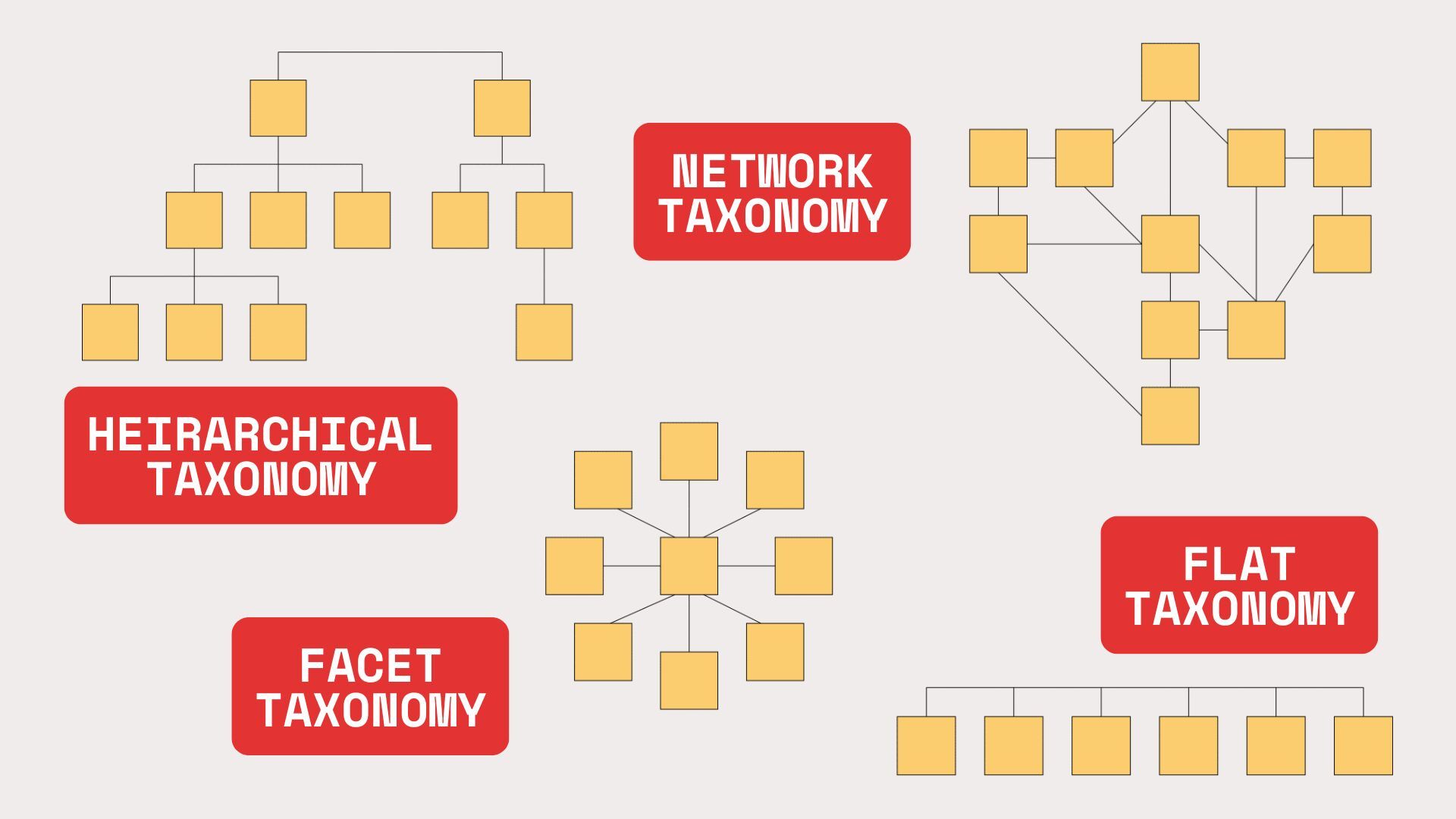What is website taxonomy?

A website taxonomy is a system used to classify and organize content, allowing users to navigate it easily and enabling search engines to interpret it accurately. It provides the structure behind how content is grouped and accessed, influencing everything from user experience to SEO performance.
This article will discuss what website taxonomy is, its importance, and how it supports both users and search engines. It will explore the different types of website taxonomies, best practices for creating them, and key design considerations. You’ll also learn about the role taxonomy plays in SEO and the practical steps involved in building a well-organized taxonomy for your website.
Understanding Website Taxonomy
Website taxonomy is the system used to classify and organize content into structured categories that reflect the relationships between different pieces of information. It defines how content is grouped, labeled, and arranged across a website to support clear navigation, consistent organization, and meaningful context.
This structure serves as a foundation for how content is managed, presented, and understood by both users and search engines.
Importance of Website Taxonomy
A well-organized taxonomy is crucial for an effective website, as it enhances both user experience and search engine optimization. Visitors to a website benefit from a clear taxonomy that simplifies website navigation and speeds up content discovery. When content is categorized properly, users can effortlessly find the information they need without confusion or frustration.
From an SEO perspective, taxonomy helps search engines interpret the website structure and content relationships. Search engine bots rely on taxonomy categories to accurately crawl and index pages. This structure also supports the creation of crucial category pages and a URL taxonomy that improves the site hierarchy and internal linking. As a result, a thoughtful structure contributes to higher search engine rankings by aligning the site’s architecture with SEO best practices.

Types of Website Taxonomy
There are several types of website taxonomies, each suited to different site structures and content strategies.
Hierarchical taxonomy is a common approach in which content is organized into levels, from broad categories to specific subcategories. This type of taxonomy mirrors natural classification systems and is effective for websites with complex content hierarchies.
Flat taxonomies, on the other hand, involve a simpler, non-hierarchical classification where categories are treated as equal without sub-levels. Flat website taxonomy can work well for smaller sites or those with less complex content.
Facet taxonomy offers a dynamic way to filter content by multiple attributes, allowing users to navigate content based on different criteria simultaneously. This type of taxonomy is frequently used in e-commerce or content-heavy sites where users benefit from flexible search options.
Network taxonomy involves interconnected categories that reflect complex relationships among content, which can be useful for specialized or large-scale websites.
Best Practices and Considerations
Creating an effective website taxonomy requires a strategic balance between clarity, usability, and search engine optimization (SEO). The taxonomy structure should align with the purpose of your content and the needs of your users. Clear and consistent taxonomy categories and category titles are crucial for helping visitors navigate your site and find relevant content quickly.
Carefully consider the depth of your taxonomy: too many levels can overwhelm users, while too few may limit the effectiveness of content organization. Your taxonomy must reflect the context and overall website structure, enabling logical grouping of different content types.
URL taxonomy is equally important; your URL structure should mirror the taxonomy hierarchy to support intuitive navigation and efficient crawling by search engines. Flexibility is crucial; your taxonomy should easily accommodate new content and evolve alongside your website.
By applying these best practices and key considerations, you ensure your taxonomy organizes your website effectively, improves content discovery, and strengthens SEO performance.
Taxonomy and SEO Benefits
Taxonomy significantly influences search engine optimization by providing a logical framework that search engine bots use to crawl and index content. A well-structured taxonomy enhances search engine rankings by highlighting relevant content through category pages and organized sections of the taxonomy.
This structure supports content-based SEO by grouping related content under taxonomic categories, which boosts relevance signals to search engines. Additionally, taxonomy helps ensure that your website’s taxonomy allows for effective internal linking, improving the overall site authority and user engagement metrics that impact rankings.
Steps to Build an Effective Website Taxonomy
Building an effective website taxonomy starts with assessing your existing taxonomy and content management system. Evaluate how your current classification system organizes content and identify gaps or redundancies. Categorize your content based on taxonomy categories that reflect different types of content and the purpose behind them.
Develop your taxonomy with both users and search engines in mind, ensuring it enables visitors to navigate your website easily while allowing search engine bots to index pages effectively. Implement the taxonomy within your content management system, ensuring that URLs are structured according to the taxonomy.
Finally, continuously optimize and refine your taxonomy as new content is added and your website evolves. This ongoing process helps maintain a well-organized taxonomy that supports content discovery, SEO, and a superior user experience.
Conclusion
Website taxonomy is a fundamental element in organizing a website’s content effectively. It acts as a classification system that enhances navigation, content discovery, and search engine optimization. A well-planned and well-maintained taxonomy improves user experience by categorizing content in a logical and accessible manner. At the same time, it enables search engines to better understand and rank your content, which contributes to improved search engine rankings.
By understanding the various types of taxonomy and adhering to best practices in taxonomy design and implementation, website owners can create a taxonomy that aligns with their site’s goals and content management requirements. Investing in an effective website taxonomy ultimately leads to a more efficient, user-friendly, and SEO-optimized website.


